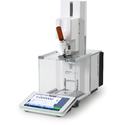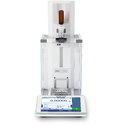 |
See how the XPR Automatic Balance is helping a German company reproducibly apply a series of ISO 17025–accredited methods using 1H NMR spectroscopy to accurately profile a variety of foods and beverages. Download the food adulteration testing case study now. |
Food fraud takes many forms but often involves deceptive labeling or adulterating foodstuffs with cheaper alternatives. Though examples of dangerous substitutions exist, the most pronounced effect of food fraud is typically on a customer’s wallet, amounting to tens of billions of USD annually across a broad range of food and beverage categories.
Food Testing Fraud
Molecular analyses such as chromatography and spectroscopy can provide detailed insight into the composition of liquids and beverages. However, accuracy in food adulteration testing requires reproducible sample preparation.
Honey and Oil Fraud
For example, honey’s viscosity makes it challenging to weigh small quantities into volumetric flasks before dissolution in D2O and assay. Likewise, olive oil assessment requires the highly volatile deuterated chloroform (CDCl3) as a solvent. In each case, the challenging consistencies affect results repeatability.
Laboratory Balances and Reproducible Testing
See how a German company has developed a series of ISO 17025–accredited methods using 1H NMR spectroscopy to accurately profile the composition of fruit juices, wine, and honey and is currently refining an application for olive oil.
In the company’s analyses, the XPR Automatic Balance reduced preparation time for honey and olive oil samples by 50% while substantially improving reproducibility, resulting in efficient food adulteration testing to detect food testing fraud, meet regulatory requirements, and protect consumers.





